Review: Only Murders in the Building, "Once Upon a Time in the West" | Season 4, Episode 1
Hop off the plane at LAX with my fave senior citizens
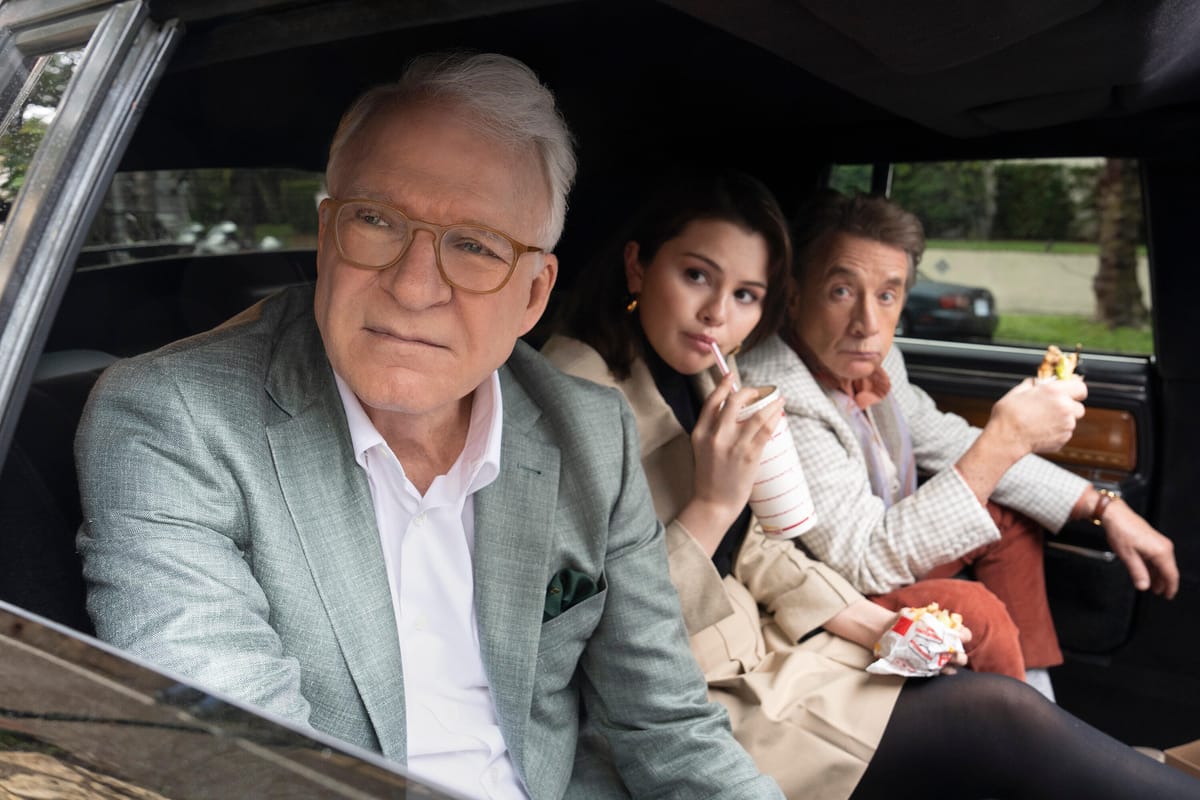
Welcome to Episodic Medium’s coverage of the third season of Only Murders in the Building. This first review is, as always, free to all, but subsequent reviews will be exclusively for paid subscribers. Our annual subscription drive starts in less than a week, so honestly wait if you’re looking for the best value, but you can find more about our mission and coverage plans here.
“We’ve been really lucky with people dying in our building.”
In a television environment where many high-profile shows are taking huge breaks between seasons, Only Murders in the Building is a rarity. After debuting with a buzzy first season, and facing questions about the ability to keep the limiting premise—it’s right there in the title—afloat, the show did something that’s increasingly uncommon in today’s TV industry: they just kept making the show without stopping to think too much about it.
This isn’t to say that Only Murders hasn’t been thoughtful about extending its premise into new territory: the second season’s deep dive into the history of the Arconia and its residents was a strong choice for a sequel, and the third season’s introduction of an entirely new world adjacent to it—a Broadway musical—kept things from becoming too stale (even if I didn’t love how that season came together in the end). However, I think it’s important to acknowledge that the show doesn’t overthink a setup for a new season. There needs to be a murder in the building, the investigation needs to have personal stakes for our investigators, and there has to be enough substance to the “world” our characters have to immerse themselves in to make things feel distinct from the seasons that came before.
“Once Upon a Time in the West” follows in the tradition of last year’s premiere, paying off the cliffhanger at the end of season three with Sazz’s murder in Charles’ apartment at the hands of an unknown sniper. The distinction here, though, is that there’s no twist this time around. While Ben Gilroy’s murder was more complicated than it seemed in the season two finale, and the premiere jumped through hoops to get him in the Arconia to meet his untimely end, the facts of Sazz’s murder are exactly as they were last season: she died in the Arconia fetching a bottle of wine, just after having told Charles that she needed to talk with him about something “sensitive.”
There’s no doubt more to the story than that, but this premiere isn’t designed to explore those realities. One of the key choices that Only Murders has made with its “soft reboot” structure is that its characters can’t immediately know that they’re in another season of a TV show. Yes, Mabel, Oliver, and Charles are feeling antsy after completing their latest season, hoping for excitement to arise. But while we at home watching know the premise of the season, the characters are left in the dark—the opening of the episode is set up with the presumption that they’re about to find Sazz’s body, but it’s already been moved, and everyone but Gravey misses the evidence of the shooting (bullet hole in the window, blood on the oven). It’s a choice that allows us to spend time with the characters in a liminal state between murders, unaware that their moment of respite has already been shattered.
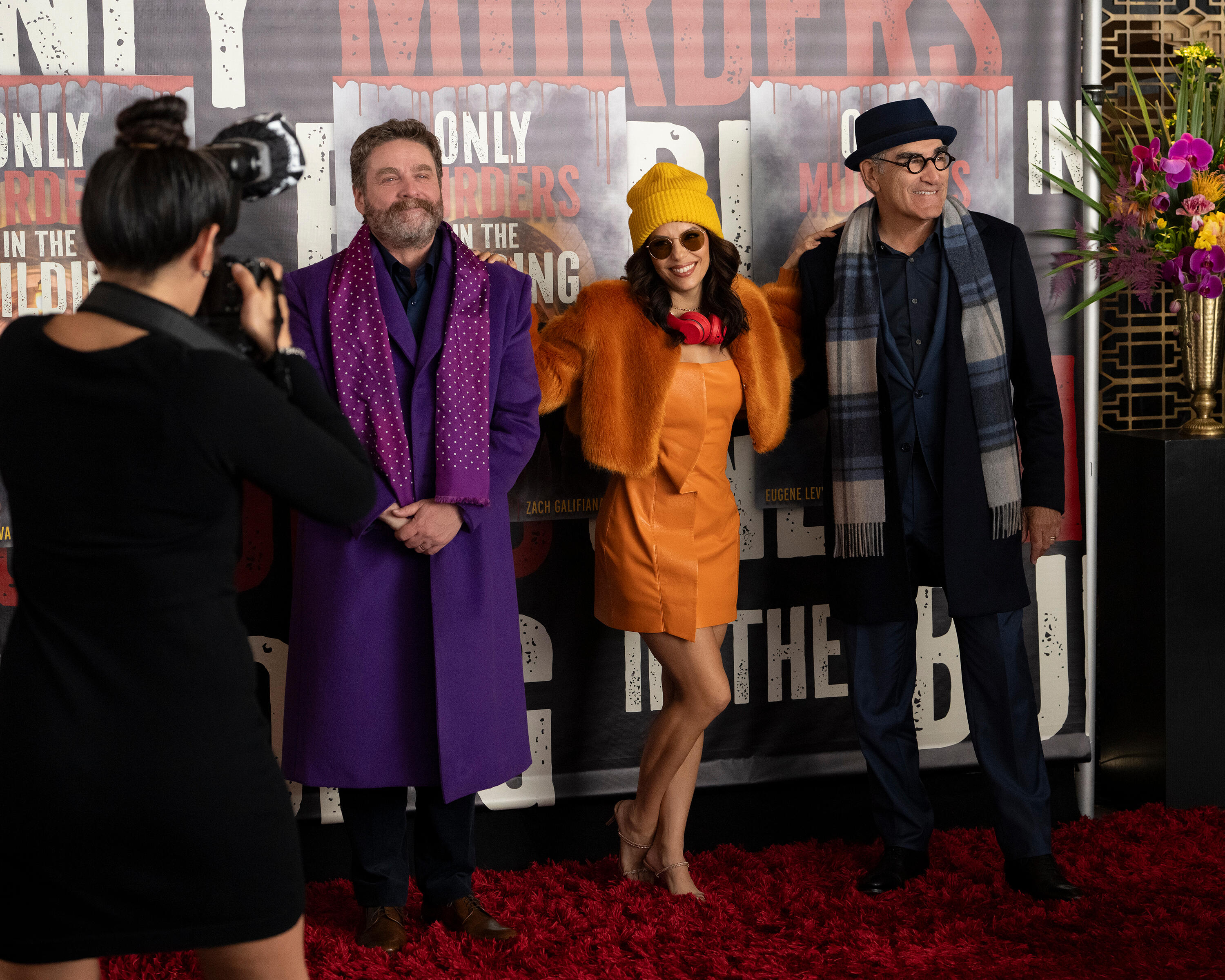
What’s different from last season is that the “new world” the characters are entering into is much more metatextually motivated. Beyond the opportunity for new celebrity cameos, the idea of a movie studio creating a film based on the podcast is a device built for forcing self-reflection from our central characters. When Charles hears Bev Melon (Molly Shannon) describe him as an unfun turtle, it makes him wonder if he’s being too much of a downer about Sazz’s disappearance. As Mabel learns the type of sad sack trauma victim the screenplay has turned her into, she wonders if this is really all her life has added up to, and whether she wants that enshrined as her “character.” And when Oliver…no, honestly, Oliver is so egotistical that every bit of this is just rolling off his back like a preening duck, but he’s still processing the sudden cancellation of Death Rattle Dazzle! while wondering about his future with Loretta.
At least in these early moments, it’s a better story for Mabel than it is for her elders. This isn’t a critique, necessarily, given that this trip to Los Angeles has non-movie related goals for the latter: Charles needs to be in Los Angeles to run into Scott Bakula and confirm his suspicions about Sazz, while Oliver is really there to see if Meryl Streep is going to be in enough episodes to qualify for another supporting actress nomination or if she’ll be bumped to guest (jury’s out on that one). But Mabel has no home and no plan forward, and so this movie comes at a meaningful crossroads for her. She doesn’t need to see Eva Longoria in a toque and Beats headphones to have an existential crisis—she’s already having one.
Selena Gomez, who was finally thankfully nominated for an Emmy so we can stop talking about how silly it is for the show to have umpteen nominations without one for her, has always played Mabel as the embodiment of millennial malaise. I was struck watching the home video clips that opened the episode at how precocious she was as a child, and obviously her time in the Disney Channel trenches was a byproduct of that. She’s never going to be that kind of actor again (I’m curious how this plays in the Waverly Place legacyquel), but the idea that her affect is something the character would like to shake is a nice turn at this point in the show’s run. The actual solution to this isn’t subtle: in addition to Chekhov’s service dog, Howard pitches Mabel on a new podcast and says “the world yearns for your content,” meaning I was unsurprised when Longoria’s pitch to milk the studio dry and “build something” convinced Mabel to sign her life rights away. But it’s a nice foundation point for a season of growth, as she turns whatever millions she’s asked for into a plan for the future (and, no doubt, an apartment in the Arconia).
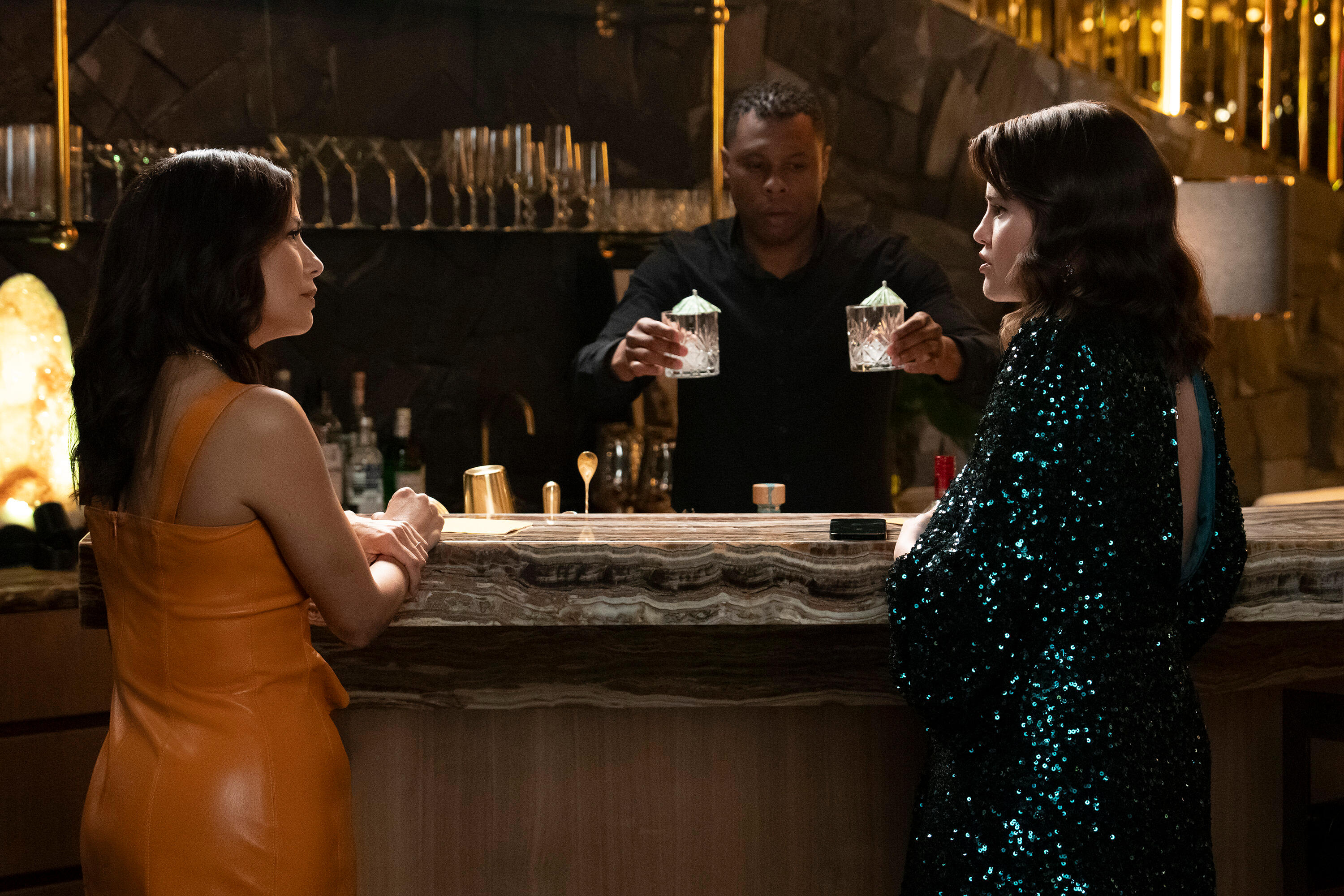
What’s less certain for me is how useful this story is as a larger anchor for the season. There’s an initial novelty to shifting the show’s perspective to Los Angeles, and the satire mostly works. I appreciated Longoria, Eugene Levy, and Zach Galifianakis playing mirror universe versions of themselves: I don’t know if Galifianakis has really settled into a dynamic with Short beyond their funny back-and-forth at first meeting, but I appreciated Longoria’s real-life shift to behind the camera serving as a parallel for Mabel (and that they acknowledged the aging up diegetically), and the detail that Levy dubbed Brazzos for Quebec got a good chuckle. However, maybe it was Molly Shannon’s presence, but I kept feeling like the satire was almost trapped in a weird space where the show can’t go full The Other Two in the way certain moments suggest. Accordingly, the idea of this recurring throughout the season is still a bit of an enigma for me—the production of the film has its own potential story functions for our characters, but it’s not nearly as structured as the production of the musical was last time around.
It’s also not really clear how the two stories will go together. I have to presume that the production will end up bringing us closer to the killer, who is communicating with Charles through Sazz’s phone. Last season definitely left us with the impression that Charles could have been the killer’s target, and I suppose that isn’t entirely off the table, but the evidence they find in Sazz’s apartment certainly points to some sort of shady situation, and the movie keeps them tied to the Hollywood of it all (whether geographically or not). But it doesn’t seem like we’re meant to look at someone like Bev Melon as a potential killer, which offers much less structure than last season when we were meant to be treating every actor/producer on Death Rattle as a suspect. While it’s a similar setup insofar as we’re entering a show business satire, there’s way less structure to support a murder mystery when the film itself wasn’t part of that event, and so threading the two together is a new challenge the show has given itself.
That’s exciting, in the end. There’s nothing in this premiere that really blew me away, but the fact the show has created some new wrinkles in its format while staying true to itself is exactly why it’s managed to have such consistency in an unstable television environment. Some of it is the timing of the writer’s and actor’s strikes—which happened exactly in the show’s hiatus—but it’s still pretty remarkable for a show to generate this level of stability at this time. It doesn’t have the Emmys to show for it, at least until we see how Meryl’s starpower fares against actors from shows with a stronger chance at winning the year’s big trophy, but there’s clearly a lot of love for a well-made show featuring top-notch talent and a strong grasp of how to tell stories to serve them. “Once Upon a Time in the West” suggests that while the location might change, these fundamental truths won’t, setting us up for an engaging fourth season.
Stray observations
- I don’t know if the episode really needed such a full detailing of the opening scene of the movie that gives the episode its title? The whole idea of an intro with just sound is playing off the whistle in the window and the way they eventually investigate the apartment for Sazz’s body once they realize she’s likely dead inside, but it doesn’t really add up to too much. However, I did appreciate the flashbacks to my Film Scores class in grad school, so shoutout to Jeff Smith.
- “So we don’t have to do it again?”—I appreciated Charles’ desire to be done with Broadway, even if it’s a bit awkward how swiftly they need to kill it in order to pick up the story right where last season ended. The explanation is solid—the producers got arrested for murder and the rest of the reviews were middling—but it still feels like there’s not enough time to grieve the loss of something so substantial to Oliver in particular.
- The thing about NORFBUN is you have to constantly keep explaining NORFBUN.
- “You’re trying to Between Two Ferns me”—Galifianakis is the most “above” the actual episode here, and I’ll be interested to see if that ever changes. It’s fine, and as with any set of high-profile cameos, their respective available time may vary.
- We were always due for a Scott Bakula cameo, but I thought it was well-handled, in terms of letting him be a nemesis to Charles (the reference to Joy) but not making him an actual asshole in a broad sense. They’re united by their concern over Sazz in this moment, and that’s what counts.
- I won’t get too into the weeds, but lots of materials relevant to my academic research on place and television here, what with the conspicuous location shooting (In-N-Out in a limo down a palm-tree lined street?) and the backlot urbanism of the fake New York set on the Paramount lot (where I was a month ago). Curious if we keep jumping back to L.A. at all, or if they’re going to shell out to shoot on location in New York (or maybe Mabel’s big pay day means they have to shoot in Toronto instead).
- The choice to have Paramount producing the movie when it has no actual involvement with the show or its distributors is so interesting to me—curious where that choice came from, and if Disney balked at getting too meta. Or maybe it was just the studio lot that was easiest for them to shoot on?
- The screener didn’t have subtitles turned on, so I couldn’t tell if it spoiled the Gravey reveal before the text messages between Howard and Mabel—I immediately clued in to the service dog connection, so really it’s only a “reveal” for Mabel, I suppose.
- And welcome back to our coverage of Only Murders in the Building! This is the first scripted show that we’ve covered for three seasons here at Episodic Medium, and I really appreciate any of you who’ve stuck around all that time to support the work we do. Getting to carry these conversations over multiple seasons is the real benefit of a community like this one, and your subscriptions make that possible. Excited to dive into the rest of the season as the fall progresses.
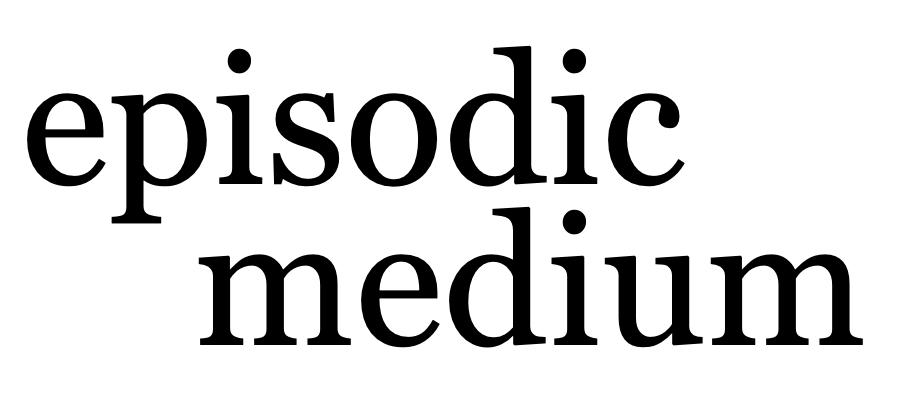
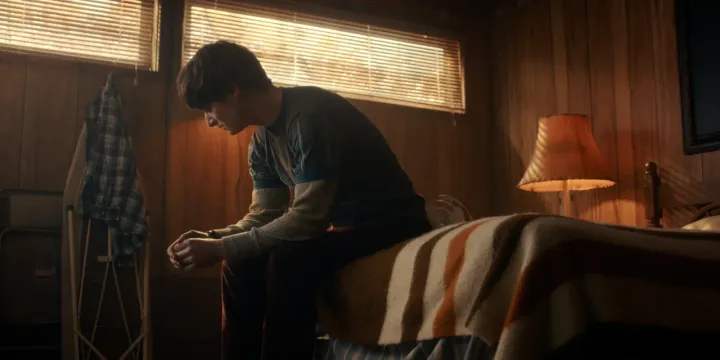
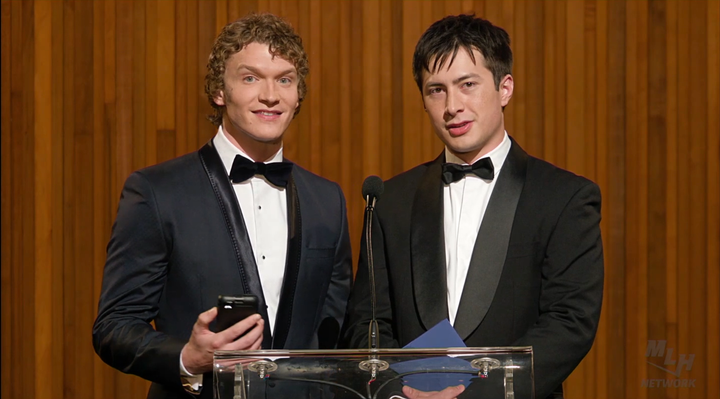

Comments ()